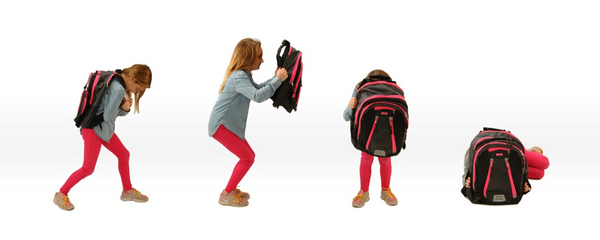Your Cart is Empty
Bulletproof Backpack Tips for Parents
Tips for keeping your child safe in an active shooter incident at school.

Whether you know it or not, every school in the US is preparing children for an attack. What are they telling them? And will the training save kids or just scare the hell out of them (and us)?
Then think back to when you were a kid. If you grew up in the ’50s, you were probably taught to duck and cover to survive aerial bombings. In the ’80s, we were led single-file down to the “fallout shelter”—the school basement—to dodge a nuclear attack. By the end of the 20th century, the standard response to any threat—be it weather, accidents, bombs, or intruders—was the lockdown: Pull down the curtains, be quiet, and lie still on the ground.
After the tragedy at Columbine High School on April 20, 1999, it became clear that the passive approach doesn’t work when a killer targets kids. On that horrific day, 52 teens and four staffers huddled under tables in the library as two students roamed the hallways brandishing shotguns, a carbine, a semiautomatic handgun, and pipe bombs. Just around the corner was an emergency exit leading out to the sidewalk. Yet anytime the kids peeked out, teacher Patti Nielson shrieked in panic, “Under the tables, kids, heads under the tables!” Four minutes later, Eric Harris and Dylan Klebold burst into the library and killed 10 teenagers.
It’s a fallacy to believe that a passive response, or relying on a locked door, will always maximize survival chances.
We encourage individuals to participate in their own survival—to read the situation and make decisions in the moment.
Do exit if safe to do so
Stay out of the shooter's direct line of sight and do not present a target by running in front of him. Instead, stay low, crawl if you have to do so, and use furniture to obstruct the shooter's view. Use a zigzag motion when you run, or move from one protective object to another until you can safely run far from the scene. The Pack should be worn as intended with head lowered and arms folded in front of the body when running away from the shooter.
Do find cover
Find cover that will protect you from bullets. Cover includes items like brick walls, steel beams, or large pieces of furniture or equipment that will stop a bullet. Outside examples of cover include large trees, concrete tables, or steel drainage culverts. Use the Pack as a shield and position it between you and the threat.
Do conceal yourself
Conceal yourself from the shooter’s line of sight. Make yourself difficult to see by hiding behind copiers, in closets, cabinets or other secure rooms. In gymnasiums, hide under the bleachers or in auditoriums and conceal yourself behind curtains or between rows of seats. Outdoors, thick bushes or tree lines, or even large trash cans or storage containers may hide you. Again use the Pack as a shield and position it between you and the threat.
Do present a small target
Present a small target whether you are exiting the scene, hiding behind protective cover, or concealing yourself from the offender. If exiting, crawl or run in a crouched position if necessary. When hiding you should make yourself as small a target as possible trying to always keep the Pack towards the threat.
Do call or text for help
As soon as you can safely do so, call or text for help to ensure that first responders are notified. Provide the police with the location of the incident, your location, and any other important information such as a description of the shooter, types of weapons used, and his last known location.
Do not carry anything while running
When your life is at stake, you need to be able to run as fast as you can when the time is right. Be ready to run by dropping everything except your Pack. Don’t worry about your food on the lunch table or homework assignment on the desk. You want to be able to leave the area as quickly as possible.
Do not hide in shooter’s line of sight
Just ducking under a table in an otherwise open cafeteria or classroom is usually not a successful tactic if you remain in the shooter’s primary line of sight. A much better option is to keep moving from table to table in the opposite direction of where the shooter is moving. Stay low and as concealed as possible while looking for an opportunity to exit.
IMPORTANT NOTE: Parents, if your child has a ballistic shield in his or her backpack, please instruct your child to NOT disclose this to the other children in their classroom or at school. In the event of an imminent shooting threat, your child’s backpack could be taken by another student.
Your child should always have easy access to the Pack whether at their desk or at the closest location used for storage such as hooks or racks.
For the younger children, practice having them make themselves “small”. In other words, if they are not able to flee or take cover, the Pack will become the only defensive item they have. Look at the photos above and remind your child how important the Pack will be in an emergency.
